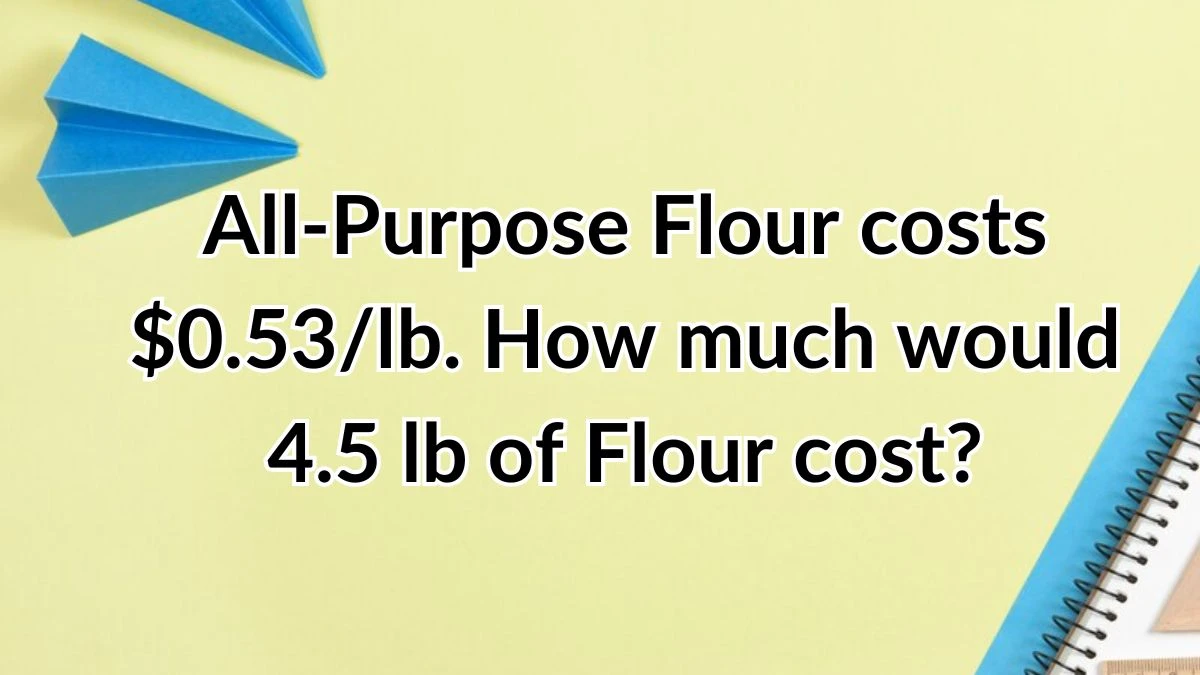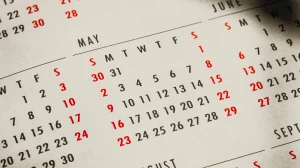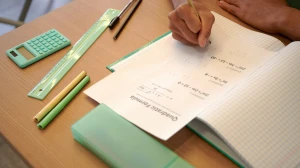All-Purpose Flour costs $0.53/lb. How much would 4.5 lb of Flour cost?
by
Updated Jul 02, 2024

All-Purpose Flour costs $0.53/lb. How much would 4.5 lb of Flour cost?
To determine the cost of 4.5 pounds of all-purpose flour when the price per pound is known, follow some simple steps.
The cost of all-purpose flour is given as $0.53 per pound.
We need to find the cost for 4.5 pounds of flour. This involves multiplying the cost per pound by the total number of pounds.
Mathematically, this is represented as
Total cost = Cost per pound x Number of pounds
Cost per pound = $0.53
Number of pounds = 4.5
Therefore
Total cost = 0.53 x 4.5
= 2.38
Thus, the price of 4.5 pounds of all-purpose flour is $2.38.
Concept of Ratios and Proportions
Ratios and proportions are fundamental concepts in mathematics that help us understand relationships between different quantities. They are used in various aspects of everyday life, from cooking to finance, making them essential tools for problem-solving and decision-making.
Definition of Ratios:
A ratio is a way to compare two quantities by expressing one as a fraction of the other. It shows how many times one value contains another. For example, if a recipe calls for 2 cups of flour and 3 cups of sugar, the ratio of flour to sugar is 2:3. This means that for every 2 cups of flour, 3 cups of sugar are needed.
Ratios are widely used in cooking to maintain the balance of ingredients. Following the correct ratio ensures that the dish turns out as expected. For instance, if a bread recipe requires a ratio of 1 part water to 3 parts flour, and you have 6 cups of flour, you would need 2 cups of water to keep the ratio consistent. Ratios are crucial in financial calculations, such as determining interest rates, comparing prices, and analyzing investment returns.
Proportions:
A proportion is an equation that states two ratios are equal. It helps in solving problems where the relationship between quantities needs to be maintained. For example, if you know the ratio of boys to girls in a class is 2:3, and there are 10 boys, you can set up a proportion to find out the number of girls.
To solve problems involving ratios and proportions, identify the known quantities and set up an equation that relates them. Cross-multiply to find the unknown value. This method is reliable and widely applicable, from simple arithmetic problems to complex algebraic equations.




